| Umělec 2005/2 >> VernisSage Poison Idea | Просмотр всех номеров | ||||||||||||
|
|||||||||||||
VernisSage Poison IdeaUmělec 2005/201.02.2005 Spunk Seipel | rituals | en cs de |
|||||||||||||
|
The vernissage—the art opening—is simply part and parcel of the art business. It’s where individuals meet, maintain contacts and where the actual reason for the event itself—the christening of a new exhibition and the display of new works of art—is more often than not pushed to the background. For most people, sometimes yawning disinterestedly or tensely, it is a routine, but the hope of occasionally striking on a special experience lingers.
The vernissage as an event is often discussed, even if the development of this event itself has forced the actual reception of art to the sidelines. In the 1960s and 70s “a vernissage with a few dozen visitors was considered a complete success,” says legendary art dealer Paul Maenz. “These days, no one is surprised any more if the number of guests is 10 times that number, and some events have even brought in 100 times that number.” In addition to a new evaluation of emerging art in wide sections of the population, other important changes have aided this development to which many gallery owners (in Berlin in the 90s, for example) have also contributed. The renunciation of the routine lecture on art history and obligatory jazz music in favor of informal discussions over a beer, with a DJ spinning music in the background, has helped overcome many earlier inhibitions. The ideas of legends such as the project gallery ‘Berlin-Tokio’ that ultimately transformed the vernissage into a party in the second half of the 1990s have shaped many art events across the spectrum right up to the present day. Nevertheless, there are still enough institutions and galleries that attach importance to the more or less established traditions, such as the Kunstverein Wiesbaden, but also to project galleries like the Lothringer Laden in Munich. This isn’t necessarily a negative, as visitors are eased into opportunities to aid understanding of the art being displayed and introduced to the necessary contacts. The vernissage serves today as in the past as the most important communication rendezvous in the art scene. On these evenings, deals are sealed and contacts established. It’s quite rare for an art opening to be about works of art alone. To be sure, there are the cool portraits by Alex Katz and the famous Edward Kienholz installations in the Berlin Gallery. Both are decades old. But today? Tino Sehgal, perhaps? And then? Perhaps there is something worthwhile by John Bock, Jonathan Messe or Joep van Liefland that will be added to that list. But anything really substantial in the guise of this art scene tradition hasn’t been seen in the last decade or so. This is possibly due to the fact that as a whole, criticism of their own business and its power structures by artists is more or less underdeveloped in spite of all assertions to the contrary. This holds true even with respect to critical artists, even if one looks past the exception of the easy-target criticism of the Flick-Connection this past year. In this context Poison Idea, the cooperative effort of Baldur Burwitz (b. 1971) and Christof Zwiener (b. 1972), has taken a strong position. In their four performances so far they have used the vernissage as a point of departure for their artwork, which in the same stroke makes the exhibition space a central theme. The visitors become a part of the action and more or less involuntary participants in the process of its emergence. At the same time, both artists are fulfilling the desire for a kick, for an extraordinary event, creating in a certain sense heightened expectations that are always mixed with a small slice of fear as well. Poison Idea has explored the limits of the possible for a vernissage and dared to push it to its extremes. An important prerequisite for their work is to have an accompanying party with music and beer. At their first event in May 2003 in the project space at the Hochschule fuer Bildende Kuenste in Braunschweig, they constructed a small room out of plywood with one wall that in the course of the evening, at first unnoticed—but later quite clearly—was being inched forward by a remote- -controlled forklift from the rear. After four hours, the bar and the dance floor had shrunk to a narrow corridor that no person could fit into. The party was effectively over because it had been robbed of its necessary space. A year later, in July 2004 in the Offspace at the “Elektrohaus” in Hamburg, a box was set up above the bar and DJ stand from which 11,000 flies were released and blown outward using a fan. The audience fled the room in revulsion. The third piece was done at the Kunsthalle Faust in Hannover in the Autumn of 2004. Ten goons solicited in an ad stormed the party and literally destroyed everything they could get their hands on within a few minutes, driving off all the guests. At the most recent event at the Olaf Stüber gallery in Berlin, sweat and condensed water from all the visitors to the gallery space was collected and filled a fountain on a table set up in a back room that doubled as the bar. A strong feeling of disgust overcame some guests when they saw their own sweat, mingling with that of other guests, coursing before them in the form of fountain water. The installation, with its empty walls and droning machine visible through the display window, though set off from the street, demonstrates a kind of provocation in an era where most galleries in Berlin present easily digestible, marketable (and therefore all the better) art. Poison Idea transforms the vernissage into a true event, not simply a marketplace of contacts and opinions, but one that uses a thematic application of the mechanisms of the art business and of their own works in a most captivating way. Indeed, they do so even through the actual implementation of the non-business aspect of their shows. That being said, they almost always surprise the public through concrete revelations in their installations: The forklift is just as visible as the compressor that sucks up the guests’ sweat. The two artists conceal nothing, put their cards on the table and reveal the structures underlying their projects. But what makes these events so meaningful is that Burwitz and Zwiener are satisfying a need in event culture for a special evening while simultaneously destroying this need with brutal means and challenging some long-established rituals in the process. With these two artists, the vernissage is no longer simply part of standard operating procedure, but has rather become a theme unto itself.
01.02.2005
Рекомендуемые статьи
|
|||||||||||||
|
04.02.2020 10:17
Letošní 50. ročník Art Basel přilákal celkem 93 000 návštěvníků a sběratelů z 80 zemí světa. 290 prémiových galerií představilo umělecká díla od počátku 20. století až po současnost. Hlavní sektor přehlídky, tradičně v prvním patře výstavního prostoru, představil 232 předních galerií z celého světa nabízející umění nejvyšší kvality. Veletrh ukázal vzestupný trend prodeje prostřednictvím galerií jak soukromým sbírkám, tak i institucím. Kromě hlavního veletrhu stály za návštěvu i ty přidružené: Volta, Liste a Photo Basel, k tomu doprovodné programy a výstavy v místních institucích, které kvalitou daleko přesahují hranice města tj. Kunsthalle Basel, Kunstmuseum, Tinguely muzeum nebo Fondation Beyeler.
|








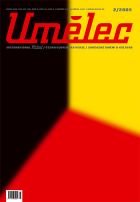




















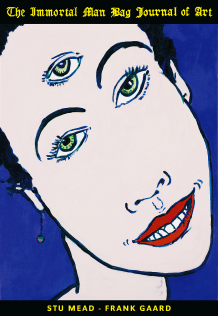




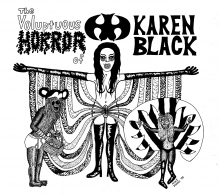

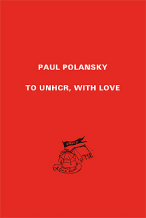
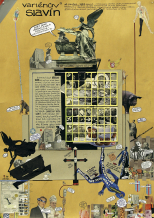


 New book by I.M.Jirous in English at our online bookshop.
New book by I.M.Jirous in English at our online bookshop.
Комментарии
Статья не была прокомментированаДобавить новый комментарий